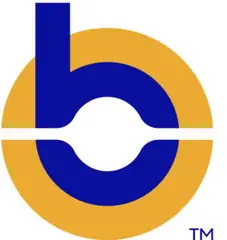Kari’s Law Notice
This notice is for informational purposes only and should not be relied upon as legal advice. You should consult with an attorney regarding your rights and obligations under the relevant law.MLTS 911 Calling Under Kari’s Law and Ray Baum’s Act
On August 1, 2019, the Federal Communications Commission adopted rules implementing two laws enacted in 2018 to strengthen emergency 911 calling: Kari’s Law and RAY BAUM’s Act. Both laws apply to multi-line telephone systems (“MLTS”)– which commonly serve hotels, office buildings, and campuses__ and were enacted to help ensure that people who call 911 from an MLTS can reach 911 and be quickly located by first responders. The implementing rules apply to multiple calling platforms, including VoIP-based systems such as those provided by Bluepeak Broadband.
This notice is intended to provide a brief overview of the requirements (and associated timelines) of the newly adopted FCC rules and Bluepeak Broadband’s plan for compliance with those requirements. Please be aware that properly managing and implementing these new 911 provisions is the responsibility of all parties in the process, including the MLTS customer/end user. Accordingly, Bluepeak Broadband strongly encourages all its customers and partner to consult legal counsel in that regard.
Kari’s Law
Under the new FCC rules, all multi-line telephone systems “manufactured, imported, offered for first sale or lease, first sold or leased, or installed” after February 16, 2020 must be pre-configured to:
- enable users to dial 911 directly, without having to dial any additional digit (such as prefix “9”) to reach an outside line and
- provide the “dispatch able location” (as discussed below with respect to RAY BAUM’s Act) of the caller to the Public Safety Answering Point (PSAP).
The rules also require anyone “installing, managing, or operating” and MLTS subject to the rules after February 16, 2020, to ensure that it is configured to:
- allow direct 911 dialing: and
- provide notification to a designated location (wether on-site or remote) where someone is likely to see or hear such notification, such as to a front desk or security office, when a 911 call is made, but only if the system can be so configured without improvements to the hardware or software of the system.
RAY BAUM’s Act
Implementing Section 506 of RAY BAUM’s Act, the FCC applied “dispatchable location” requirements to ensure that sufficiently detailed information, such as the street address, floor, room, and/or suite number (if applicable) of a 911 caller, is conveyed to the PSAP with the 911 call, regardless of the technological platform used, so that first responders can be quickly dispatched to the caller’s location.
The rules provide different timelines for the implementation of the dispatch able location requirement depending of the type of device:
- An on-premises fixed telephone associated with an MLTS must provide automated dispatch able location no later than January 6, 2021;
- An on-premises non-fixed device associated with an MLTS must provide automated dispatch able location no later than January 6, 2022, when technically feasible; otherwise, it shall provide dispatch able locations based on end user manual update, or alternative location information.
- An off-premises device associated with an MLTS must provide automated dispatch able location no later than January 6, 2022, when technically feasible; otherwise, it shall provide dispatch able location based on end user manual update, or alternative location information.
Bluepeak Broadband’s Compliance with Kari’s Law and RAY BAUM’s Act
- Direct 911 Dialing (No Prefix) is Enabled for 911 Calls
- Bluepeak Broadband’s HPBX system is compliant with Kari’s Law as it is pre-configured to not require prefix dialing for 911 Emergency Calls.
- MLTS Notification
- Bluepeak Broadband’s system is not required to provide the MLTS notification by February 16, 2020, as substantial modifications/improvements to the system are required to enable such notification.
- Over the course of the last year Bluepeak Broadband made significant upgrades to its switching platform and is currently developing provisioning software upgrades to implement the MLTS notification requirements. Specifically, upon completion of the upgrades, which Bluepeak Broadband anticipated will be completed by June 30, 2020, Bluepeak Broadband’s system will allow the customer to designate an email address to which a notification email will be sent contemporaneously when a 911 call is made.
- The MLTS Emergency Call Notification email will contain the following:
- Date and start time of the emergency call
- Dialed digits
- User ID, user name, user extension (if assigned), and user phone number (if assigned)
- Group ID, group name, and group address (if entered on group profile)
- With respect to the MLTS notification feature, it will be customer’s obligation to:
- Provide an email address such that it is likely that the recipient will see or hear the 911 call notification;
- Ensure that the email address is entered correctly; and
- Maintain and updated the email address/account, as necessary.
- Dispatchable Location
- With respect to on-premises fixed devices, Bluepeak Broadband’s platform currently provides a 911 interface that allows the updating of dispatchable location information in compliance with the FCC rules.
- With respect to on-premises non-fixed devices and off-premises devices, Bluepeak Broadband is currently in the process of developing user-facing enhancements which will allow customer/end users to manually update dispatchable location information in compliance with the FCC rules.
- Bluepeak Broadband will provide updates to its customers regarding the completion of the MLTS 911 calling upgrades / enhancements currently in development.
- These enhancements will be completed will in advance of January 6, 2022 deadline provided in the rules.

